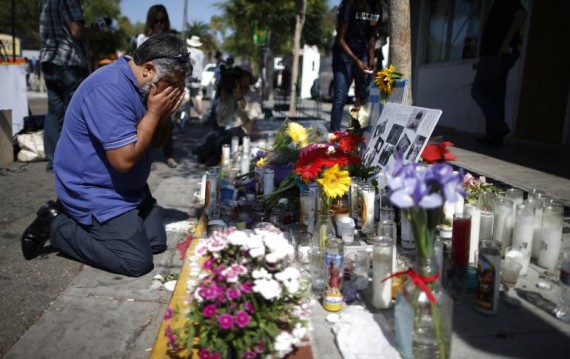
By my count, the Santa Barbara killings are the sixth mass murders committed by someone with a mental disorder in recent memory. I found myself making the media rounds this week saying much the same thing that I have said after all of these shootings.
I did notice two articles that I felt provided fresh views.
In Why Can’t Doctors Identify Killers? published in the New York Times, Richard A. Friedman argues that the notion we can stop mass murders by improving our mental health system is a misconception.
“It is a comforting notion, but nothing could be further from the truth,” writes Friedman, who is a professor of clinical psychiatry and the director of psychopharmacology clinic at the Weill Cornell Medical College.
Friedman also cautions against lowering the dangerous criteria for involuntary commitment and argues that drug and alcohol abuse are far better indicators of potential violence than mental illnesses. I disagree with some of his points, but found his article thought-provoking.
Another article worth reading was written by my friend, Dr. Dinah Miller, one of the writers behind the popular blog, Shrink Rap.
In Distinguishing the Killers Among Us, she recalls a personal story when a fellow high school student revealed that he was planning to kill another student. When he brought a knife to school, she alerted her mother who notified school officials. The boy was removed from class but returned six weeks later. She wasn’t aware of what authorities had said to the boy because he refused to speak to her. After the Santa Barbara killings, Dr. Miller decided to check on her former classmate. She knew that he had graduated from an Ivy League University but learned that today he is earning a six figure salary as a company executive.
“(His) brief period of being a disturbed adolescent did not progress to a life defined by chronic mental illness, and he did not go on to become a violent felon.”
The Elliot Rodger case is especially painful to parents. News reports suggest his parents recognized their son was troubled, got him into treatment and when his writings and statements on social media alarmed them, they called the police to request a “wellness” check. When his statements became even more worrisome, they left immediately to visit him only to be too late.
Armchair quarterbacking is always risky, but here are a few thoughts about this recent shooting.
Lesson one: I strongly endorse Crisis Intervention Team Training for the police, but a psychiatrist should have been sent to evaluate Rodger based on his parents’ call and Rodger’s psychiatric history.
Lesson two: Even if a psychiatrist would have found Rodger’s mental condition troubling, little could have been done because he was not posing an immediate danger to himself or others. I’ve written before about the need to re-examine “danger to self or others” as a criteria. Coercion should always be the last step, but we need to find a better criteria for deciding when to use it simply because no one can predict dangerousness.
Lesson three: The reason the police were called is because we do not have viable alternatives. Most emergency rooms are no better equipped to evaluate an individual in crisis than are the police. We need more crisis stabilization centers, such as those in San Antonio, Texas, and Philadelphia, Pennsylvania, where someone who is experiencing a mental crisis can be evaluated and offered the help that he/she needs.
Lesson four: communication and coordination are crucial. Did anyone bother to contact Rodger’s therapist? Did anyone listen to why his parents were so alarmed? Were they asked about their son’s past episodes? Too often, parents are marginalized. Not all parents are good parents. But most care about their adult children’s mental health. I’ve heard too many stories from parents who attempted to talk to law enforcement, doctors and therapists only to be dismissed and told that background information about their adult child’s earlier episodes was insignificant. Would the same be said about a heart condition?
Lesson five: it’s all about money. Elliott Rodger came from an affluent family but being wealthy is no guarantee that you will receive meaningful care and treatment. (See lesson one – sending a psychiatrist with first responders would be wonderful, but in most communities getting an appointment to see a psychiatrist can take days, weeks, even months. See lesson three –we need more crisis stabilization centers, but building them takes money.)
I’ve visited dozens of wonderful recovery programs during my trips to every state except Hawaii and Mississippi and have spoken with fabulous advocates who have developed creative ideas about helping people get better, often by involving them in their own recovery.
But until we decide to make mental health care a funding priority, we will continue to pay the price that comes from a badly-fractured, imperfect system.



